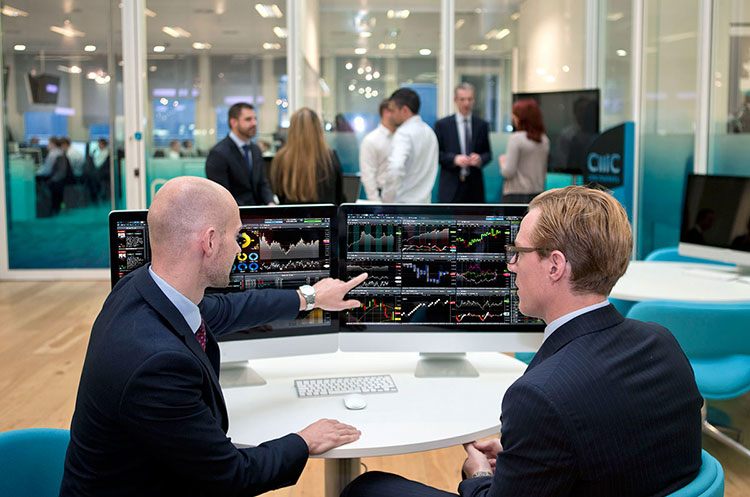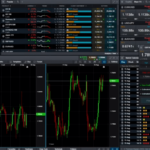Before you can learn to trade CFDs, it’s important to understand what they are and what they are not. CFDs, have been around since the early 90’s and were primarily used by hedge funds and institutions to trade stocks and shares on margin. However, over recent years, with the rise of online trading platforms, retail investors have been able to trade forex, indices and commodities (as well as shares) via contracts for difference.
A contract for difference (CFD) is a leveraged financial product that allows traders to speculate on an asset class without actually owning the underlying asset.
It is very important to highlight that CFD trading is not investing. It is very high-risk speculation, and as CFDs utilise leverage it is possible to lose all your money quickly if you call the market wrong.
- Related guide: 50 rules for successful trading
However, if you call the market correctly, you can make a greater return on your money than by investing in fully paid-up physical stock as you are trading on margin.
CFD trading also has the advantage of not being liable for stamp duty which is currently at 0.5% of the value of a trade. This makes CFDs a more efficient way of trading stocks and shares in the short-term.
The key points to remember are that CFDs are a good tool for short-term speculators compared to physical stock buying as the costs are lower, but as CFD trading is leveraged, then the risks are higher.
CFDs are:
- A complex financial derivatives product
- A tool to go long and short the market, or hedge an existing portfolio
- A form of leverage trading that can increase your exposure to the market
CFDs are not:
- A low-risk way to invest
- Suitable for traders with no experience
- A get-rich-quick scheme
How Do You Trade CFDs?
When you trade CFDs you do it in much the same way as trading shares. For example, if you want buy 10,000 shares in a company you would instead go long 10,000 CFD.
It is essentially the same as buying 10,000 shares, but when you trade a CFD you speculate on the rise or fall of the price of the underlying instrument that the contract is over, without ever owning it, meaning that your interest in that instrument is purely economic.
CFDs or Contracts for Differences are cash-settled, and there is no delivery of shares or commodities, or whatever else the CFD is over.
Unlike futures contracts CFDs have no fixed expiry dates and in theory, a CFD can run on forever.
Though daily financing charges are applied on CFD trades that are held open beyond a business day, and they may make very long term CFD positions uneconomic.
An example of CFD trading explained
Let’s imagine we want to take a long (buy) position in Vodafone shares, but rather than buying the stock we choose to buy a CFD over them, and we have £5000.00 available to us for the trade.
Assuming that Vodafone shares are trading at 100p we could have invested £5000 into the stock to buy 5000 shares.
But using as CFD, which on leading equities typically offer leverage at a ratio of 5:1 we only need to commit £1000 to the trade to control a CFD over 5,000 Vodafone shares.
On that basis then might choose to take on a larger position, by using a deposit of £2000 to create a CFD over 10,000 Vodafone shares.
So, imagine that we have placed the CFD trade in the morning and that just before Wall Street opens Vodafone’s share price has risen to 110p per share – compared to our 100p entry price.
We now have running profit on our position of +10p per share – true for both the physical stock and the CFD trade.
However, because we have taken a larger position in Vodafone, using a CFD we have a larger running profit.
How to calculate running profit on CFD trades
In this case, that’s calculated as follows:
10,000 (the number of shares in our CFD) * 10p the running profit per share) = £1000.
Let’s imagine that the price of Vodafone continues to appreciate throughout the afternoon and that by 4.15 pm the stock is trading at 115p per share.
The running profit on the CFD position has now reached 15p per share and we cash in by selling our CFD position to close realising a gross profit of £1500.
10,000 *15p = £1500.
Our outlay on the CFD trade was £2000.00 initial deposit plus a commission or trading charge, and we have made a £1500. gross profit.
A figure that represents 75% of our initial deposit on the trade.
When we compare that to the profit we could have made investing £5000. into Vodafone shares, which is £750. or 15% of the initial outlay of £5000. We can immediately see how the gearing or leverage within a CFD can work in our favour.
What are the advantages of CFD trading over other forms of trading?
CFDs are among the most flexible of financial trading products and they can be tailored to fit all shapes and sizes of trades.
Here’s a summary of some of the features of CFD trading compared to both Exchange Traded Futures and Financial Spread Betting.
| Feature | CFDs | Physical Investing | Exchange Traded Futures | Spread Bets |
| Leveraged Trading | Yes | No | Yes | Yes |
| Flexible Trade Sizes | Yes | Yes | No | Yes |
| Fixed Expiry Dates | No | No | Yes | Varies |
| Trade Long or Short | Yes | No | Yes | Yes |
| Finance charges | Yes | No | No | Varies |
| Good for Short Term Trading | Yes | Varies | Yes | Yes |
| Good for Long Term Trading | No | Yes | Yes | No |
| Confers Ownership of the Underlying | No | Yes | Yes | No |
One of the best things about CFDs is that they are not deliverable and instead are settled for cash. That means that traders can go long or short using CFDs with equal ease, as they never have to take or make delivery of the instruments that the contract is over. As such CFDs can be used to profit in markets that are falling or to hedge physical positions against a downturn in the markets.
There are no absolute minimums in terms of cash required to open a CFD account but realistically you will probably need to have an initial deposit of at least £2000. for it to make economic sense. And ideally a figure closer to £5000. is preferable. Smaller sums limit the scale and number of positions you can take and CFD traders with small deposits can face higher marginal costs in terms of minimum ticket charges etc.
Short-term trading tends to be driven by sentiment which these days is often categorised as being either risk on or risk off. So it’s important for traders to be able to identify times when the market and fellow traders are feeling fearful and other times when they are feeling greedy.
Many CFD traders play the swings in market sentiment by jumping on to the trends they create, where weight of money and influence push the market in one particular direction.
More experienced traders will sometimes take a contra position for example getting long risk assets such as equities, when the market is in a risk off mood. This is often referred to as buying the dip. However deep pockets and good timing are essential for that strategy to work well.
One way for CFD traders to identify trends and trend changes in the market and the instruments they trade, is through the use of Technical Analysis which is the study of price action and volume.
The study of price action can reveal a great deal about market and trader sentiment and the price points at which bullish or bearish sentiment is triggered or fades away. That in turn can provide a framework around which traders can build their CFD trading strategy.
To learn more about technical analysis see our dedicated TA section.
What are the disadvantages of CFD trading?
The main disadvantage of CFD trading is leveraged losses on CFD trades. That leverage can work against us just as easily and had Vodafone shares fallen by -15p across the trading day, then that CFD position would have created a running loss of -£1500.
We would either have had to close the position and realise the loss, or place further variation margin, equivalent to the running loss, on our account, in this case, £1500. in order to keep the position open if we wished to hang on to trade.
You also do not own the underlying asset, so unless our broker allows it you will not be able to vote on corporate actions or attend AGMs. This also means that there is added risk of default. When you own physical shares you are the ultimate owner so if you broker goes bust you still own the shares. However, with CFDs, the counterparty is the broker, so if they go bust you may lose the position.

Richard is the founder of the Good Money Guide (formerly Good Broker Guide), one of the original investment comparison sites established in 2015. With a career spanning two decades as a broker, he brings extensive expertise and knowledge to the financial landscape.
Having worked as a broker at Investors Intelligence and a multi-asset derivatives broker at MF Global (Man Financial), Richard has acquired substantial experience in the industry. His career began as a private client stockbroker at Walker Crips and Phillip Securities (now King and Shaxson), following internships on the NYMEX oil trading floor in New York and London IPE in 2001 and 2000.
Richard’s contributions and expertise have been recognized by respected publications such as The Sunday Times, BusinessInsider, Yahoo Finance, BusinessNews.org.uk, Master Investor, Wealth Briefing, iNews, and The FT, among many others.
Under Richard’s leadership, the Good Money Guide has evolved into a valuable destination for comprehensive information and expert guidance, specialising in trading, investment, and currency exchange. His commitment to delivering high-quality insights has solidified the Good Money Guide’s standing as a well-respected resource for both customers and industry colleagues.
To contact Richard, please ask a question in our financial discussion forum.




